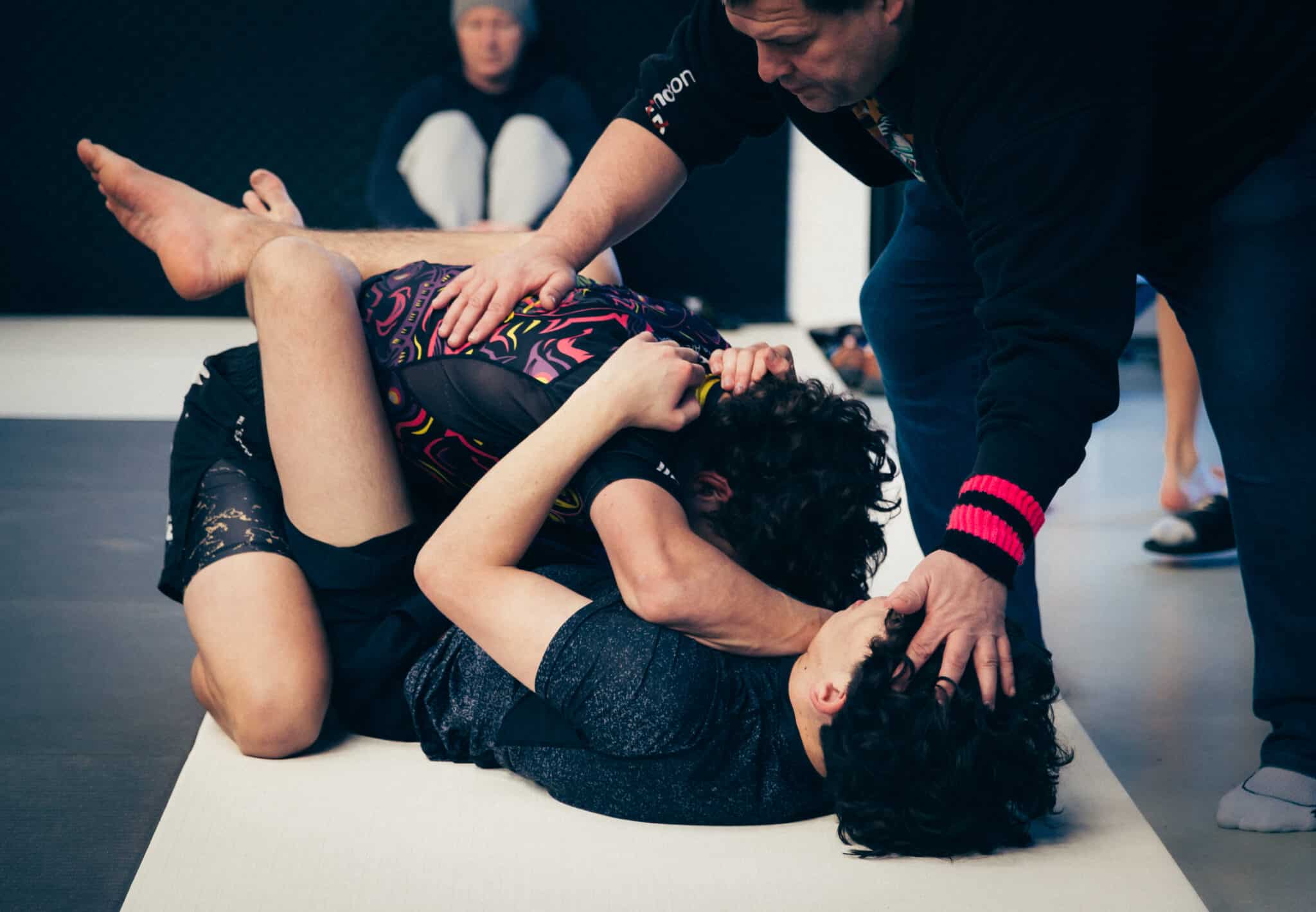The first step in breaking free from the defensive cycle is understanding why we fall into it. For me, it often stemmed from a more profound, even subconscious, learnt passivity. Indeed, this does tie into the Dissociative Personality Disorder I have previously been diagnosed with. Under stress, I disassociate. While much more subtle in the BJJ context, this passive mindset, while protective in nature, can paradoxically lead to more vulnerability. Being constantly on the defensive exhausts physical energy and saps mental strength.
Recognising this pattern was crucial. It became apparent that my passive tendencies off the mat were manifesting in my Jiu Jitsu practice. My natural inclination to avoid confrontation and minimise risks in everyday life was mirroring my approach on the mat. This revelation was a turning point, helping me acknowledge that the change had to start from within—not just in technique but in mindset.
Another vital aspect was identifying the triggers that kept me in this loop. Often, it was the fear of the unknown—the uncertainty of what would happen if I went on the offence. This fear can be paralysing, trapping us in an endless cycle of reactive rather than proactive behaviour. Addressing these fears head-on, through exposure and incremental steps towards taking more control, began to shift my perception and approach.
The journey is ongoing, and while I’m still learning to consistently break free from this cycle, each small step towards a more assertive mindset feels like a victory. Embracing the discomfort, accepting that mistakes are part of the process, and gradually stepping out of the safety of defence have been integral to this transformation. By recognising these underlying factors, substantial progress can be made towards adopting a more offensive stance both on and off the mat.
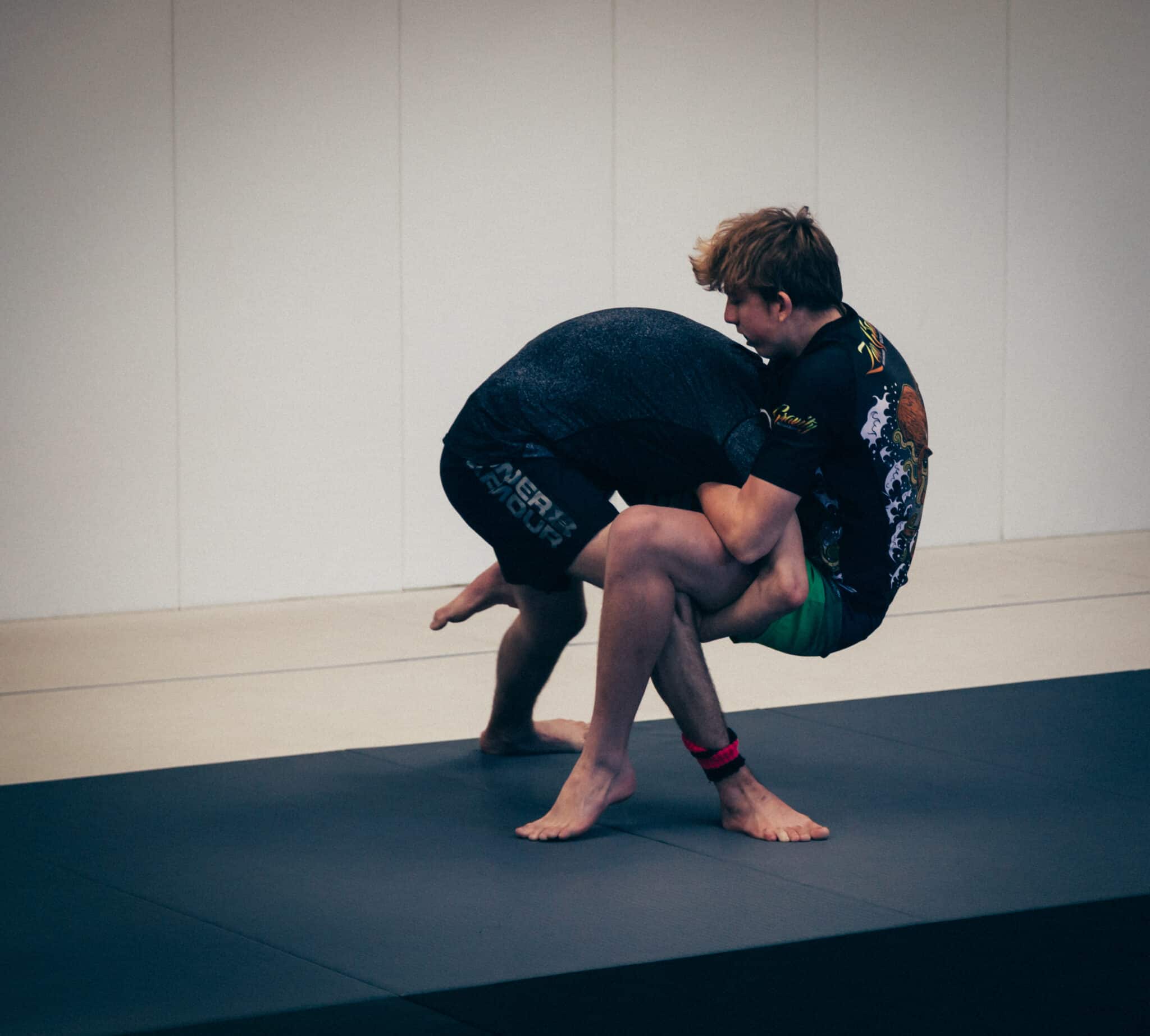
The Art of Aggression: Harnessing Controlled Force
Stepping into a more offensive approach in Brazilian Jiu Jitsu is not merely about strength and force but mastering the delicate balance between aggression and control. During a training session, one of my most striking realisations was that aggression in BJJ does not equate to flailing about wildly. Instead, it is channelled through strategic pressure, timed attacks, and maintaining a clear, focused mindset.
Controlled force comes from understanding the mechanics of each move and recognising the perfect moment to execute it. This is something I am still learning. The importance of drilling techniques repeatedly, not just to build muscle memory but to instil a nuanced understanding of leverage, weight distribution, and timing, is often emphasised. This foundation transforms raw aggression into a calculated and effective offensive strategy.
An essential part of harnessing controlled force is self-awareness. In my journey, I have found it crucial to gauge my opponent’s reactions and emotional state constantly. It’s easy to let a passive mindset take control, often resulting in missed opportunities and a tendency to play it safe. By practising mindfulness and staying grounded, I’ve begun to recognise these patterns in myself, gradually transforming a laid-back approach into purposeful action and decision-making.
Another transformative principle for me has been patience. It’s tempting to rush for a submission or pass guard forcefully, but BJJ taught me the potency of waiting for the precise moment when my opponent is most vulnerable. Initially, this felt counterintuitive—after all, doesn’t aggression mean always pressing forward? But, I realised that true controlled force involves periods of relentlessness tempered by moments of strategic waiting.
Incorporating these principles into my practice has been difficult, especially with a naturally passive personality. Yet, this transition—from passivity to balanced assertiveness—has reshaped my approach to BJJ. It’s not just about becoming more aggressive; it’s about evolving into a more precise, thoughtful, and practical practitioner.
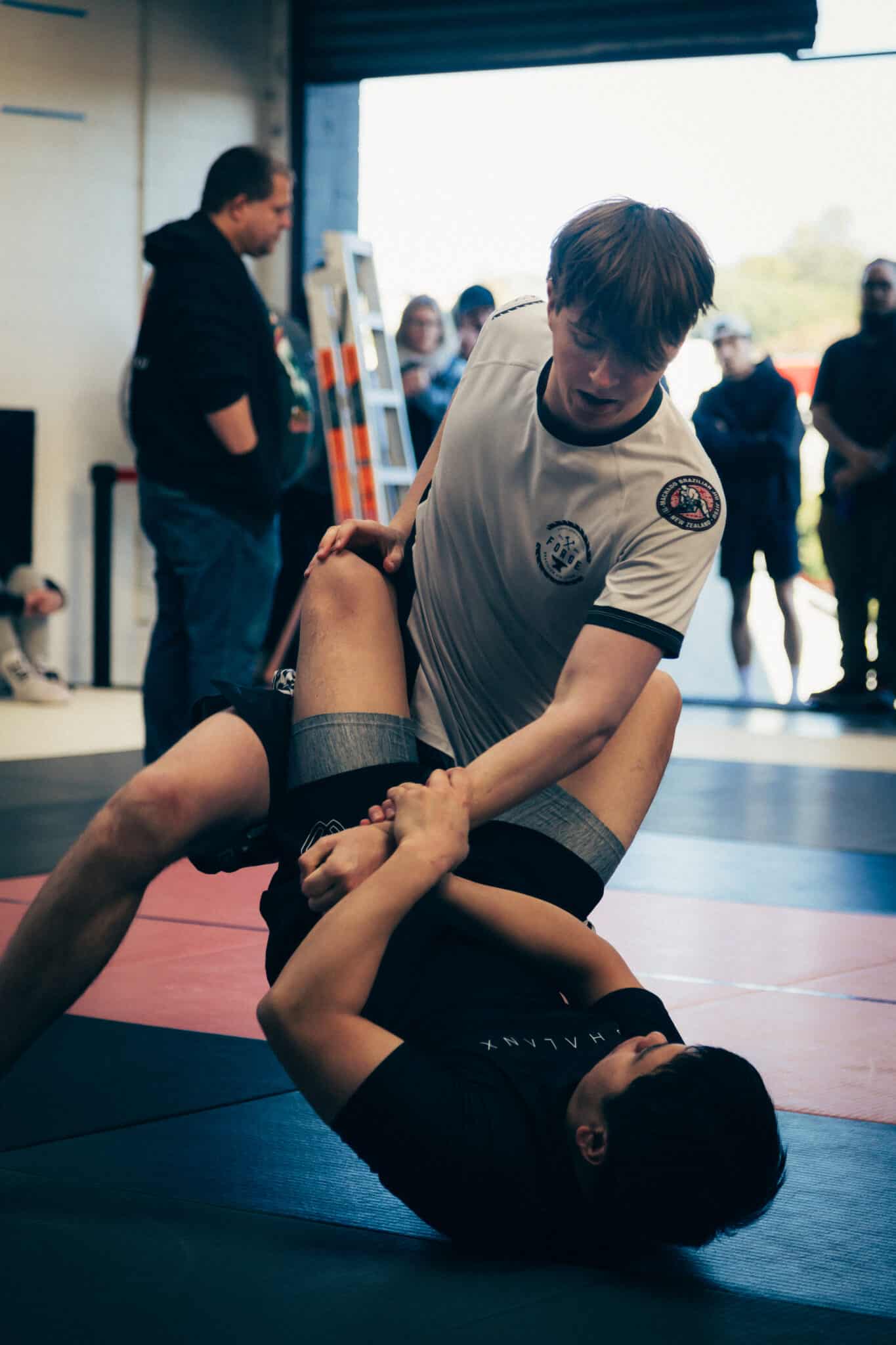
Overcoming Fear and Hesitation: Mental Blocks to Aggressiveness
I’ve often found myself paralysed by hesitation on the mat. The fear of making a mistake or leaving myself vulnerable has been a persistent mental block, keeping me in a perpetual defensive cycle. However, one thing I’ve come to realise is that this fear, while very real, is something I can work through.
For me, overcoming this fear started with accepting that mistakes are an inevitable part of learning. Every time I stepped onto the mat with a mindset that mistakes were growth opportunities, I felt a slight shift in my approach. Instead of viewing a failed sweep or a missed submission as a setback, I began to see them as crucial feedback. This shift in perspective, though subtle, was incredibly liberating. It allowed me to take more risks and explore more aggressive techniques without the constant self-reprimand.
Another breakthrough came when I started to embrace the concept of controlled aggression. For a long time, the idea of being aggressive felt at odds with my more laid-back, passive personality. However, as I trained and observed experienced practitioners, I noticed that actual aggression in Brazilian Jiu Jitsu isn’t about brute force but precision, timing, and commitment. By redefining what aggression meant for me, I could start integrating it into my game in an authentic and manageable way.
I also found it immensely helpful to set small, achievable goals. Instead of aiming to overhaul my entire style overnight, I focused on specific situations. For instance, in rolling sessions, I might decide to attempt a particular guard pass more assertively, regardless of the outcome. These micro-challenges helped build my confidence incrementally, making the mental shift towards an offensive mindset more sustainable.
Lastly, surrounding myself with supportive training partners and mentors played a crucial role. As I have progressed, so have those close in rank to me – and – noticibly – they have increased their use of pressure and pushing discomfort – both giving and taking. It gives me the opportunity and ‘permission’ to do the same.
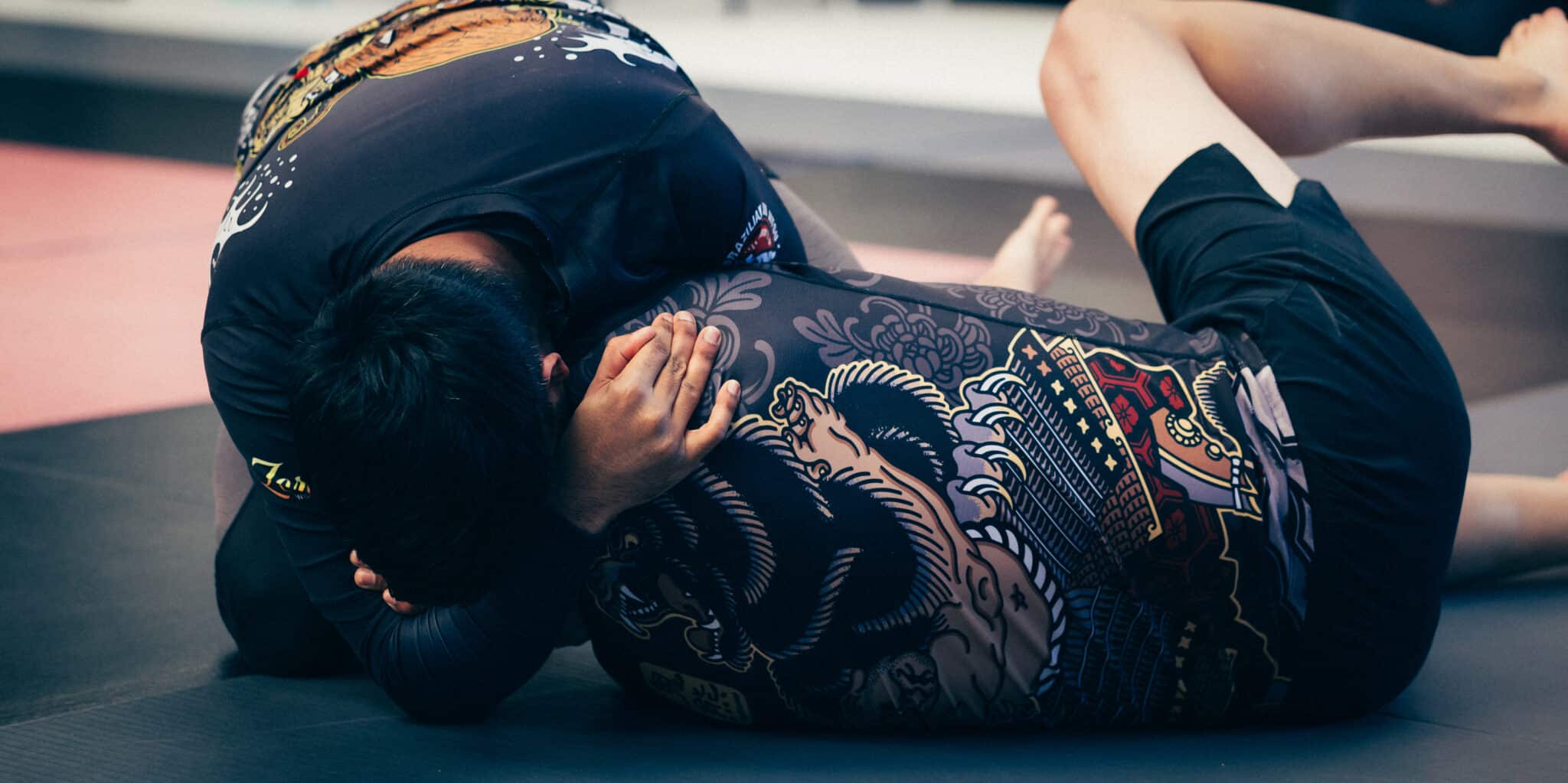
Training with Intent: Developing a Forward-Pressing Style
One of the hardest things I’ve had to confront is my tendency to wait and react rather than initiate. In training, this often meant I’d be the one defending and fending off attacks rather than creating opportunities myself. To develop a forward-pressing style, I realised it was essential to practice with specific intent. This involved setting clear goals before each session, focusing on attacking techniques, and dedicating time to perfecting my offensive strategies.
Instead of just rolling with the flow, I began each session by identifying key moments when I could switch from defence to offence. Whether it was seizing a grip quickly, establishing dominant positions, or executing submissions confidently, I intended to make these actions second nature.
Perhaps most crucial was the mental preparation before stepping on the mat. I reflected on my hesitations and visualised myself taking the initiative. It wasn’t just about physical readiness but about reshaping my mindset to embrace a more assertive role. This mental rehearsal, combined with deliberate practice, gradually eroded my defensive habits, paving the way for a more aggressive and dynamic style in my Jiu Jitsu practice.
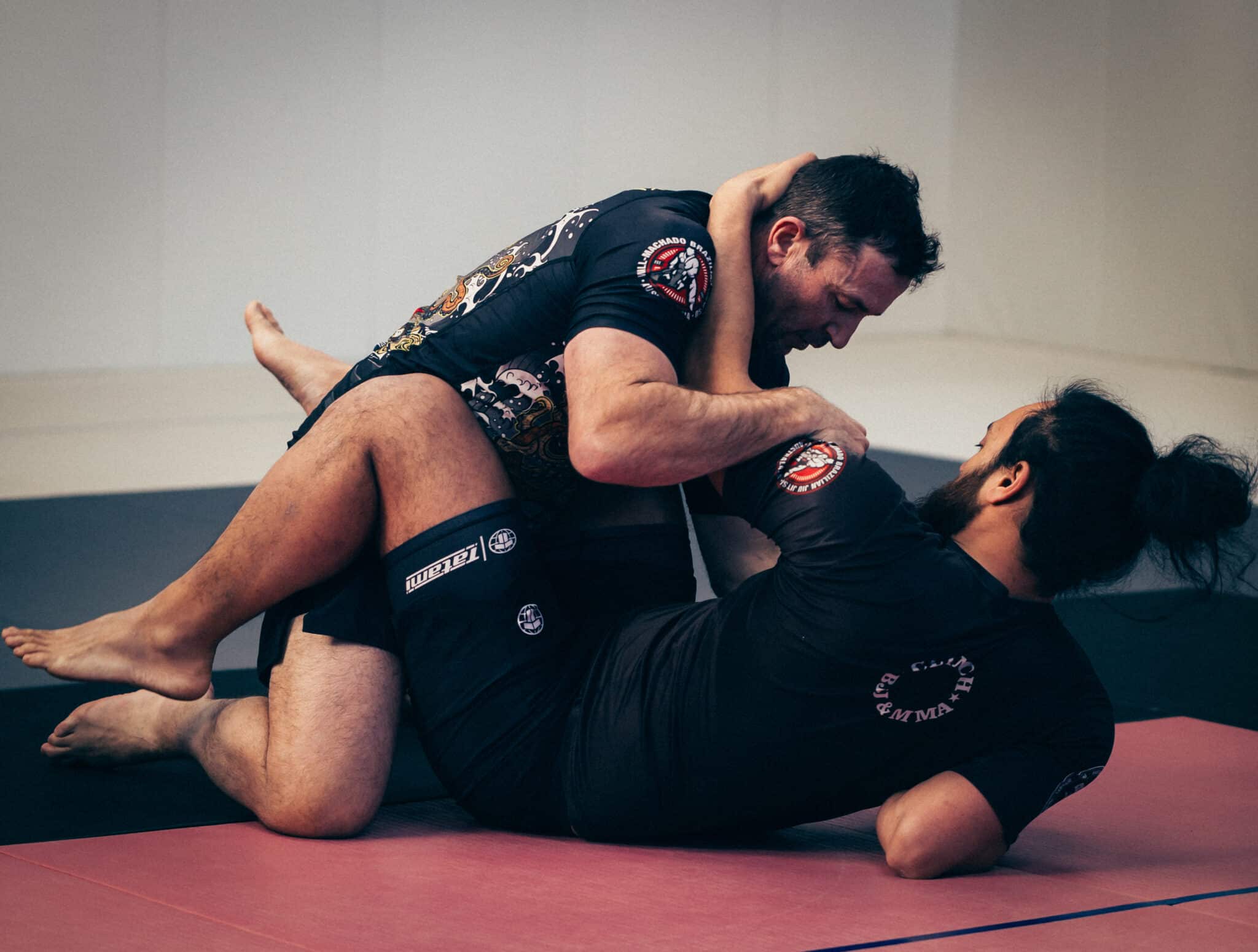
Combining Defence and Offence: A Balanced Approach
Finding the right balance between defence and offence has been one of the most transformative aspects of my Brazilian Jiu-Jitsu journey. Initially, I was consumed by the notion that being defensive meant I was somehow failing. Over time, however, I realised that defence isn’t inherently passive; it’s the necessary groundwork upon which effective offence is built.
Think about it like a pendulum. It swings both ways, and the energy it gathers on one side propels it to the other. In training, this means focusing on building a robust defensive foundation. Understanding how to protect yourself and escape challenging positions gives you the confidence to take calculated risks offensively.
One of the key insights I’ve embraced is the seamless transition between defence and offence. When sparring, I’ve learned that rather than simply reacting to my opponent’s moves, I should be looking for opportunities to turn the tide. For instance, instead of just surviving under mount, I now actively look for spaces to insert my knees or create frames – these small actions often lead to a counterattack, catching my opponent off guard.
Moreover, a balanced approach has helped me manage my energy more effectively. I used to expend a lot of energy trying to escape positions frantically. Now, with a calmer, more calculated defensive strategy, I conserve energy, which I can channel into powerful offensive bursts when the moment is right.
This balanced mindset also demands adaptability, urging me to remain fluid and responsive rather than rigidly sticking to a single approach. It becomes a dance – a dynamic interchange of giving and taking, protecting and attacking. Embracing this fluidity has enriched my training experience, allowing me to flow more naturally between the two states.
Ultimately, combining defence and offence isn’t about perfecting each in isolation but integrating them harmoniously. As I continue on this path, I find myself more aware, strategic, and – most importantly – more confident on the mats, knowing that my defence can set the stage for my most effective offences.
I still have a lot to learn.
- Recognizing the defensive cycle is crucial for breaking free and transitioning to a more offensive mindset.
- Brazilian Jiu Jitsu’s aggression involves controlled force and strategic pressure, not reckless actions.
- Understanding and overcoming mental blocks like fear and hesitation are essential to developing a more assertive style.
- Intentional training focused on offensive techniques can help develop a forward-pressing style in practice.
- Balancing defence and offence allows for a more comprehensive approach, enhancing overall effectiveness.

